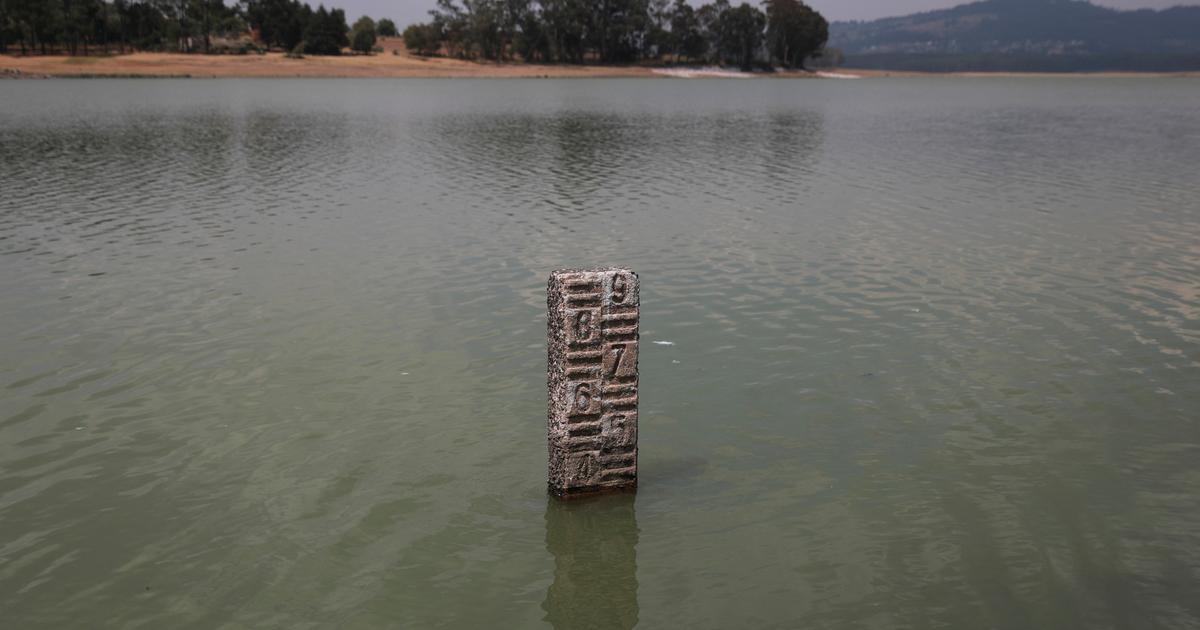Mexico City returned to red alert in mid-December, but the second wave of the pandemic is not being a symmetrical copy of the May peak.
The pressure on hospital capacity is now greater - on Christmas Eve it began to approach 90% - and the map of the most affected areas has also changed.
During the first wave, infections and deaths grew more in the popular sectors of the capital, the southeast and the metropolitan area, while this time the coup is concentrating the urban core and with higher per capita income.
An analysis of data from EL PAÍS reveals that Coyoacán, Cuauhtémoc and Miguel Hidalgo are among the most affected delegations.
After a few hesitant weeks, the authorities finally decided on December 18 to once again maximize prevention measures, the so-called red traffic light.
The decision was staged in a joint act of the city's head of government, Claudia Sheinbaum, and the governor of the State of Mexico, Alfredo del Mazo, who were accompanied by the federal undersecretary of Health, Hugo López-Gatell.
The Valley of Mexico, the capital and its metropolitan area, will meet on January 10 the first deadline to raise its hand.
Although it will be unlikely, since the capital authorities themselves have recognized that according to their epidemiological model, the number of infections and hospitalizations will continue to increase during this week until reaching a new peak around January 11.
The Christmas dates, unsurprisingly, have caused a rebound.
From the beginning of December to the beginning of January, hospitalizations practically doubled to exceed 6,000 admitted patients.
During the last weeks, the occupancy data offered by the city government have remained at maximum: on December 23, a day before Christmas Eve, the hospital occupancy was 78%;
on January 2 it had risen to 85%.
The first weekend of the year stabilized at around 87%, where it remains.
The apparent stability in hospital data within these last dates has been taken advantage of by President Andrés Manuel López Obrador to step out in his daily press conference this Monday.
“This situation that occurred in a special way in Mexico City, especially the city and the State of Mexico, did not exceed us, but we are already leaving.
The worst is already happening ”.
A recent report from CIDE and Stanford University was not so optimistic about the hospital's responsiveness in the city.
In the worst case scenario, it calculated a 99% probability of saturation at the end of January, for a 77% in case of a greater effectiveness of the prevention measures during the holidays.
If the focus is closed to Mexico City to compare the evolution of the epidemic in deaths per million inhabitants each week since March, a significant group of delegations would already be reaching or even exceeding the levels of the first wave.
That this occurs in deaths is very significant for two reasons: on the one hand, the death data are less subject to the increase in diagnostic tests that has occurred in the city since the expansion of the epidemiological strategy that began in January.
On the other, and more importantly, deaths are a more reliable, but also later, indicator of the epidemiological situation: the mean time between infection and death exceeds two weeks, to which must be added the delay of another several days for diagnostic confirmation, so the photo of a certain moment in deaths indicates how the epidemic was almost a month before.
That even with this inherent delay there are already places reaching the levels of May and June announces that there is still a peak to climb to the data series during January.
In two delegations the maximums registered in December have already exceeded those of the initial wave.
Azcapotzalco is the most striking case: its June peak was already one of the highest in the country, and even so now it has overwhelmed it.
Coyoacán had relatively more modest values, but the current escalation suggests a plateau that, perhaps, will last as long as the first, but at higher levels.
During Christmas and New Years, the capital registered 593 complaints for holidays that exceeded the number of people allowed.
Among the delegations with the highest incidence, Coyoacán stands out, precisely, a residential area with high purchasing power.
In three other central delegations with high-income neighborhoods (Miguel Hidalgo, which houses the exclusive Polanco area; Cuauhtemoc, where the very fashionable Roma and Condesa are; Benito Juárez) the curve is already at levels practically identical to those of the first peak.
It is not just a question of how pronounced the maximum is;
also cumulative incidence.
The deaths per million accumulated in the months that contained the beginning and worst of the first wave (from March to June) are already in all these delegations less than those observed in the equivalent period at the end of 2020 (September to December) .
In Gustavo A. Madero (populated by popular neighborhoods, and perhaps the most affected in the first wave) and Iztapalapa (where the virus started like a slow but constant fire in May and June), the situation is for now notably better than in the past.
However, in the urban northwestern core of the city, reality has turned around.
From a more systematic point of view, if all the delegations are divided into two groups according to the poverty rate in each one, those with the greatest number of poor households are also those with the most deaths per capita: 293 compared to 211 during December .
However, it turns out that in the group of delegations with the lowest poverty there are also fewer cases, despite the fact that there are more deaths.
This apparent contradiction can be explained by at least two reasons, not mutually exclusive, and that help to glimpse the future development of the epidemic in the capital during 2021. It may be that the city government is conducting more tests per case detected in vulnerable areas, effectively following the policy announced in the valley of cases that gave some respite in July and August.
But it could also be that this second wave is following the same path as the first, when infections and deaths began in neighborhoods with a higher purchasing power to end up affecting the working classes with equal or greater intensity.
This was the case in the first wave, when the values of cases per capita ended up equalizing between the groups of delegations with greater or lesser poverty level (almost 6,000 per million between March and June in both urban segments), but not so much those of deaths (765 per million in areas with the most poor households, 725 in the rest).
With the well-known delay that the death indicator leads to the march of the pandemic, the number of cases in these delegations could indicate that a percentage of them will end up becoming deaths, and with it the peaks in all corners of the capital will end to be in similar points.






/cloudfront-eu-central-1.images.arcpublishing.com/prisa/NHAGPMQH45FWPHD273W2SBSACU.jpg)


